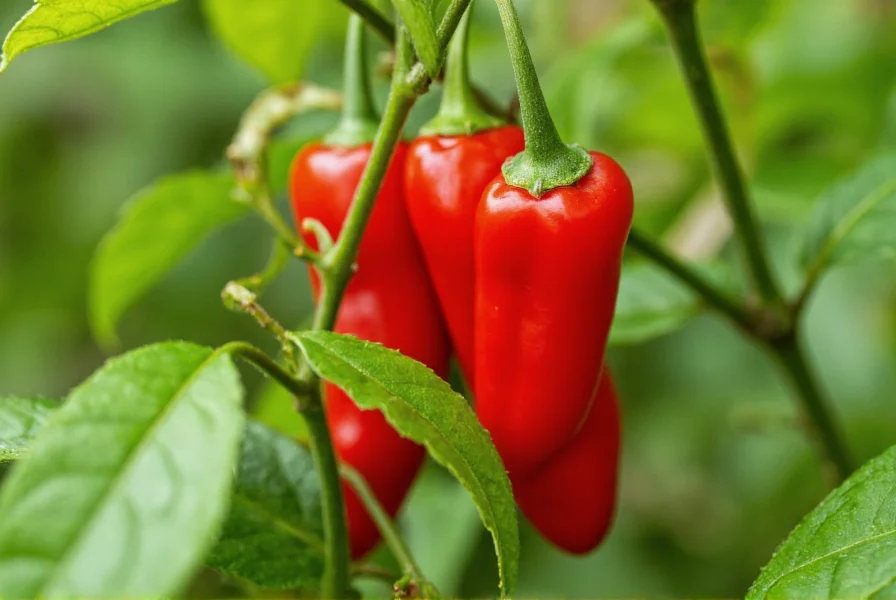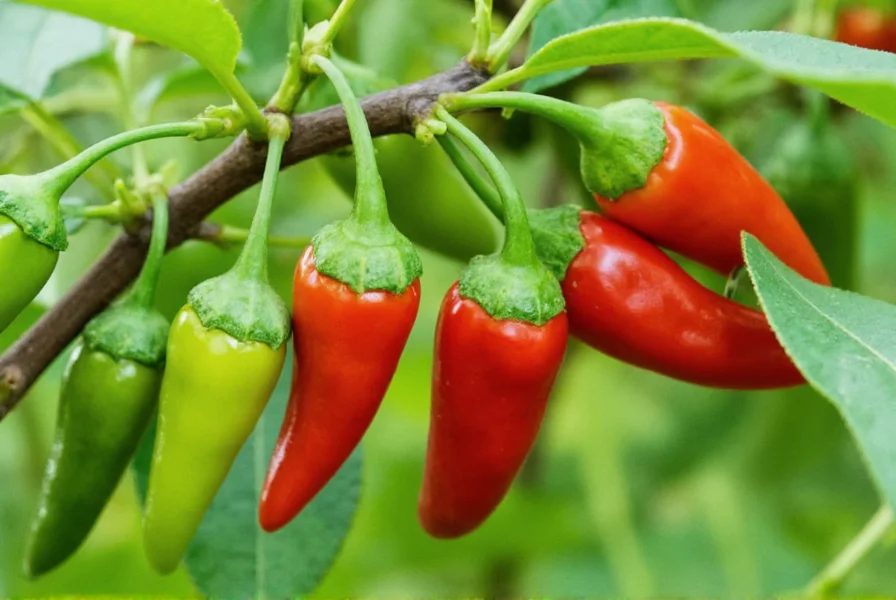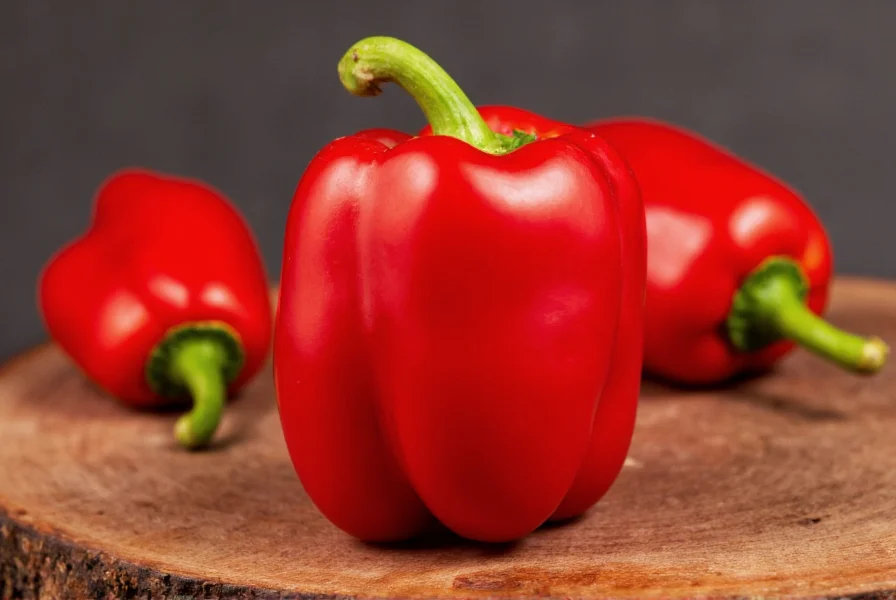Understanding the distinction between Tabasco peppers and the famous hot sauce is essential for culinary enthusiasts. These vibrant peppers belong to the Capsicum frutescens species and have been cultivated for centuries in Mesoamerica. Their unique heat profile and flavor make them valuable in both traditional and modern cooking applications.
Botanical Characteristics and Heat Profile
Tabasco peppers feature distinctive physical attributes that set them apart from other chili varieties. These small peppers typically measure 1.5 to 2 inches in length with a tapered shape and thin walls. They begin their growth cycle as green peppers before maturing to brilliant red, orange, or yellow depending on the specific cultivar.
Their heat level, measured at 30,000-50,000 Scoville Heat Units (SHU), places them firmly in the medium-hot category. To put this in perspective:
| Pepper Variety | Scoville Heat Units | Relative Heat Comparison |
|---|---|---|
| Tabasco pepper | 30,000-50,000 | 6-12x hotter than jalapeño |
| Jalapeño | 2,500-8,000 | Baseline |
| Cayenne | 30,000-50,000 | Similar heat to Tabasco |
| Habanero | 100,000-350,000 | 2-7x hotter than Tabasco |
Unlike bell peppers which contain no capsaicin, Tabasco peppers deliver a sharp, immediate heat with subtle fruity undertones. Their thin walls make them ideal for drying or processing into sauces, as they contain less water content than thicker-walled varieties like bell peppers or poblanos.

Historical Origins and Cultural Significance
The Tabasco pepper takes its name from Mexico's Tabasco region, where it has been cultivated for centuries. Indigenous peoples of Mesoamerica first domesticated Capsicum frutescens varieties long before European contact. Archaeological evidence suggests chili peppers have been part of human diets for approximately 6,000 years.
The connection between the Tabasco region and the famous hot sauce emerged in the 1860s when Edmund McIlhenny created the first batch of Tabasco sauce on Avery Island, Louisiana. While McIlhenny used Tabasco peppers as his primary ingredient, he developed a unique production process involving aging the pepper mash in white oak barrels with vinegar and salt.
It's crucial to distinguish between the Tabasco pepper variety and the commercial Tabasco sauce product. Many people searching for how to grow Tabasco peppers mistakenly believe they're seeking information about the sauce brand, when in reality they're looking for the specific pepper cultivar.
Growing Tabasco Peppers Successfully
Cultivating Tabasco peppers requires specific conditions to thrive. These tropical plants need 70-90 days to reach maturity from transplanting and prefer warm temperatures between 70-85°F (21-29°C). Gardeners interested in growing Tabasco peppers at home should consider these key factors:
- Soil requirements: Well-draining soil with pH between 6.0-6.8
- Sun exposure: Minimum 6-8 hours of direct sunlight daily
- Watering needs: Consistent moisture without waterlogging
- Container growing: Possible in pots of at least 5 gallons with proper drainage
For those exploring Tabasco pepper plant care, proper pruning encourages bushier growth and higher yields. Pinch off the first few flowers to allow the plant to establish stronger roots before fruiting. When harvesting, wait until peppers have fully ripened to their final color for maximum flavor development.

Culinary Applications and Flavor Profile
The unique flavor profile of Tabasco peppers makes them versatile in the kitchen. They offer more than just heat—they contribute a bright, slightly citrusy flavor that enhances many dishes. When considering using fresh Tabasco peppers in cooking, home chefs can incorporate them in various ways:
- Finely minced in salsas and hot sauces
- Infused in oils for spicy finishing touches
- Added to pickling brines for vegetables
- Blended into marinades for meats and seafood
- Preserved through drying or fermentation
Unlike the vinegar-forward flavor of commercial Tabasco sauce, fresh Tabasco peppers provide a cleaner heat that allows their natural fruitiness to shine. When comparing Tabasco pepper vs cayenne, both occupy similar heat ranges, but Tabasco peppers tend to have more floral notes while cayenne delivers a sharper, more straightforward heat.
Nutritional Benefits and Safety Considerations
Tabasco peppers contain valuable nutrients beyond their heat factor. They're rich in vitamin C (more than oranges by weight), vitamin A, and capsaicin—the compound responsible for their heat. Research suggests capsaicin may offer several health benefits including:
- Potential metabolism boost
- Natural pain relief properties
- Anti-inflammatory effects
- Cardiovascular health support
When handling extremely hot peppers like Tabasco varieties, proper safety precautions are essential. Always wear gloves when cutting hot peppers and avoid touching your face. The capsaicin oil can cause severe irritation to eyes and sensitive skin. If you experience burning sensations, dairy products like milk or yogurt provide more effective relief than water.
Common Misconceptions Clarified
Several misconceptions surround Tabasco peppers that deserve clarification. The most prevalent confusion involves difference between Tabasco peppers and Tabasco sauce. While the sauce uses Tabasco peppers as its primary ingredient, the final product undergoes a specific aging process that transforms the fresh pepper's flavor profile.
Another common misunderstanding relates to heat levels. Many people assume all red peppers are equally hot, but Tabasco pepper Scoville scale measurements show significant variation even within the same color category. The maturity stage also affects heat—fully ripe red Tabasco peppers tend to be slightly milder than their green counterparts.
Frequently Asked Questions
Are Tabasco peppers the same as the Tabasco sauce?
No, Tabasco peppers are a specific chili variety (Capsicum frutescens), while Tabasco sauce is a commercial product made from these peppers combined with vinegar and salt. The sauce undergoes a three-year aging process in white oak barrels that transforms the fresh pepper's flavor profile.
How hot are Tabasco peppers compared to other common chilies?
Tabasco peppers measure 30,000-50,000 Scoville Heat Units, making them 6-12 times hotter than jalapeños (2,500-8,000 SHU) but significantly milder than habaneros (100,000-350,000 SHU). They share a similar heat range with cayenne peppers but offer more floral notes in flavor.
Can I grow Tabasco peppers in containers?
Yes, Tabasco peppers grow well in containers of at least 5 gallons with proper drainage. They require 6-8 hours of direct sunlight daily, consistent watering, and warm temperatures between 70-85°F. Container-grown plants may need more frequent fertilization than garden-planted varieties.
What's the best way to preserve fresh Tabasco peppers?
Fresh Tabasco peppers can be preserved through several methods: freezing whole peppers, drying them for powder, pickling in vinegar, or fermenting to create homemade hot sauce. For long-term storage, freezing maintains flavor best, while drying concentrates the heat.











 浙公网安备
33010002000092号
浙公网安备
33010002000092号 浙B2-20120091-4
浙B2-20120091-4